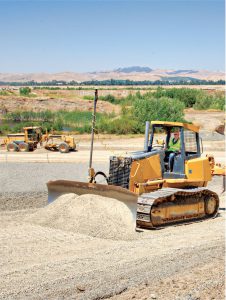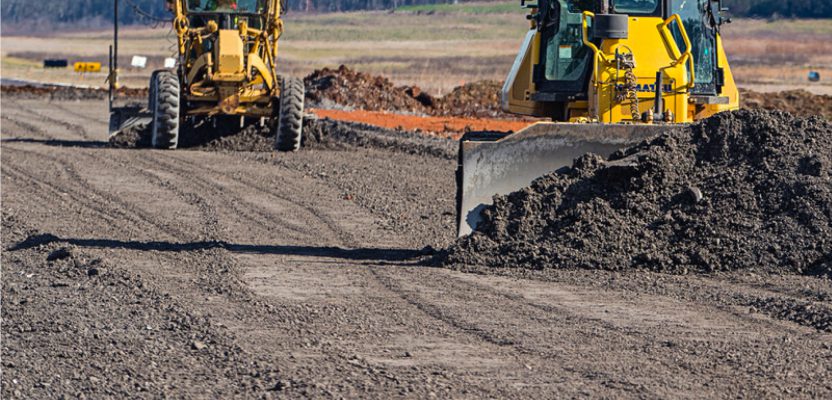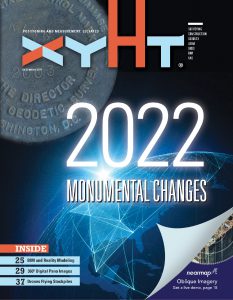Greater interconnectivity is transforming the way we go about construction.
Probably the best definition of the Internet of Things (IoT) appears in a Forbes magazine article written by the futurist Jacob Morgan; it’s the concept of “connecting any device with an on and off switch to the internet (and/or to each other).”
This includes everything from cellphones, coffee makers, washing machines, wearable devices, and almost anything else. It also applies to components of machines, for example a jet engine of an airplane or the drill of an oil rig. Again, all of these examples have an on and off switch.
Which begs the question: why? Why would we want a thing, such as a coffee maker, connected to the internet? Easy, to get it brewing so when you wake up there’s a pot of freshly-made coffee waiting, and to turn it off if checking confirms that it was absentmindedly left on.
A 2013 Global Standards Initiative on Internet of Things defines IoT as “a global infrastructure for the information society, enabling advanced services by interconnecting (physical and virtual) things based on existing and evolving interoperable information and communication technologies.” For these purposes, a “thing” is “an object of the physical world (physical things) or the information world (virtual things), which is capable of being identified and integrated into communication networks.”
The Global Standards Initiative further states that “the IoT allows objects to be sensed or controlled remotely across existing network infrastructure, creating opportunities for more direct integration of the physical world into computer-based systems, and resulting in improved efficiency, accuracy, and economic benefit in addition to reduced human intervention.
“When IoT is augmented with sensors and actuators, the technology becomes an instance of the more general class of cyber-physical systems, which also encompasses technologies such as smart grids, virtual power plants, smart homes, intelligent transportation, and smart cities. Each thing is uniquely identifiable through its embedded computing system but is able to interoperate within the existing internet infrastructure.
“Experts estimate that the IoT will consist of about 30 billion objects by 2020.”
Construction Industry Is Out Front
The technologies behind the Internet of Things have existed for many years in the construction market, such as remote access, office-to-field data exchange, cloud computing, and data storage. Granted, not all construction contractors have invested in these new technologies, but they have been available for some time.
In consumer markets, these technologies are still new and revolutionary, with new connected “things” just coming to market. For consumers, IoT is about convenience rather than criticality. If, for instance, a smartphone breaks for a consumer, it is not the end of the world (well, for some people it is). But for a construction contractor, a smartphone, tablet, or laptop failure can raise concerns about the security, data integrity, and response times, which are absolutely critical.
“Interconnected smart technology is central to how we engineer our solutions and their functionality in the hands of our customers,” said Ivan Di Federico, executive vice president and chief strategy officer for Topcon Positioning Systems.
“The opportunities are seemingly limitless. The power of IoT provides comprehensive planning, process control, workflow monitoring, and extensive reporting that will bring our customers the full advantages of connectivity.”
IoT Platform
The “IoT Platform” is the operating world in which the construction market has been evolving. It’s meant to provide construction equipment manufacturers and the end-user contractors with analytics and reports about various aspects of their tasks and assets in order to enhance the decision-making process and obtain the best possible management of resources, fleets, and personnel.
In the construction field, the key is sensors. Sensors make it possible to capture all the information needed to improve decisions with real-time data about the work site and the workforce.
Providing each piece of equipment with the capability of sending and receiving data allows the platform to reproduce a digital detailed representation of the product itself. That is called a digital twin.
“Thanks to the digital twins of our products, activities like monitoring, diagnosis, and repair can be completed remotely,” Di Federico said. “What this means is we can have experts based anywhere in the world able to provide monitoring, troubleshooting, and/or repairs without needing to be physically there at the worksite or contractor’s location. This would result in tremendous savings of time and travel expenses.
“Moreover, there can be direct collaboration between on-site personnel and equipment operators and our experts.”
Data Is Key

An IoT platform allows for direct collaboration between on-site personnel and equipment operators and experts.
Smart, connected construction equipment can allow tracking of how it’s being used. Through the accumulation of historical data, the IoT platform can build patterns of information so we can better understand customer-contractors’ necessities and the environment in which they operate and can provide advanced solutions to fit their needs.
Indeed, data collected from smart, connected products and systems provide detailed information on how the products’ features are used, which are most useful, and which are ignored.
The collected data, which is called Big Data, provides options for different types of analysis:
- descriptive: to retrieve a detailed report of current conditions and understand what happened in a specific working environment;
- predictive: to provide a reliable prediction about product performances and forestall the occurrence of potential malfunctioning or damage;
- prescriptive: to know how to optimize and automate the process and the workflow via realtime project maps and plans that feed the machines.
The platform provides numerous and detailed information that can be selected according to the need at the time. This enables making effective and profitable choices. It is possible to retrieve virtually any useful information, from fuel consumption to equipment productivity, from maintenance services to (in the near future) prognostics.
Sensors make it possible to capture all the information needed to improve decisions with real-time data about the work site and the workforce.
In addition, most of the functionalities are completely customizable for meeting specific contractor needs (e.g. dashboard layout, alarms and notifications, CAN-Bus parameters, units of measurement, language).
For the contractor owners and managers, analytics is possible for comparing usage patterns in order to improve services, increase productivity, ensure better quality, and create more accurate pricing and bidding strategies.
The ultimate benefits of Big Data are cost reductions and deeper insights as to what customers need.
“Interconnected smart technology is central to how we engineer our solutions and produce their functionality for our customers,” said Di Federico. “The challenges, as with most innovation, have mostly to do with adoption. Once construction contractors have an opportunity to see first-hand how the solutions we provide make them more efficient, the concept of IoT makes perfect sense.
“Greater productivity means undeniable higher profits for their businesses and assists them in meeting what we at Topcon call ‘The Intersection of Infrastructure and Technology’. It is the meeting point where construction productivity is improved by applying intelligent positioning technology, and clearly IoT is part of this bigger picture.”
For Topcon and other technology companies in its niche, providing connected solutions to the construction market enables contractors to have comprehensive monitoring of conditions, operations, and the work site through sensors and data. This means monitoring knows no boundaries.
Assets can be monitored from everywhere, wherever the contractor happens to physically be. It enables real-time communication and task management with machines and crews on the work site. Additionally, the entire fleet of machines working at the site can be connected.
“We absolutely design our solutions with IoT top of mind. When practically any new product or system is designed, integration with these solutions is standard and expected procedure.”
The IoT is here to stay. It is the future, and for many it is the present. In the construction market, the success of technology that enables construction contractors to bid projects more accurately based on their own historic production data—and get their jobs completed faster, more accurately, and more efficiently using inteligent interconnected technology—has raised customer expectations.
“For construction contractors and OEMs today, the tremendous benefits of IoT enhances the decision-making process for obtaining the best possible management of resources, fleets, and personnel,” said Di Federico.
Top image: An IoT platform allows for direct collaboration between on-site personnel and equipment operators and experts.
For further reading on IoT in geospatial, see:
To read more from this print issue, click on the cover below.


